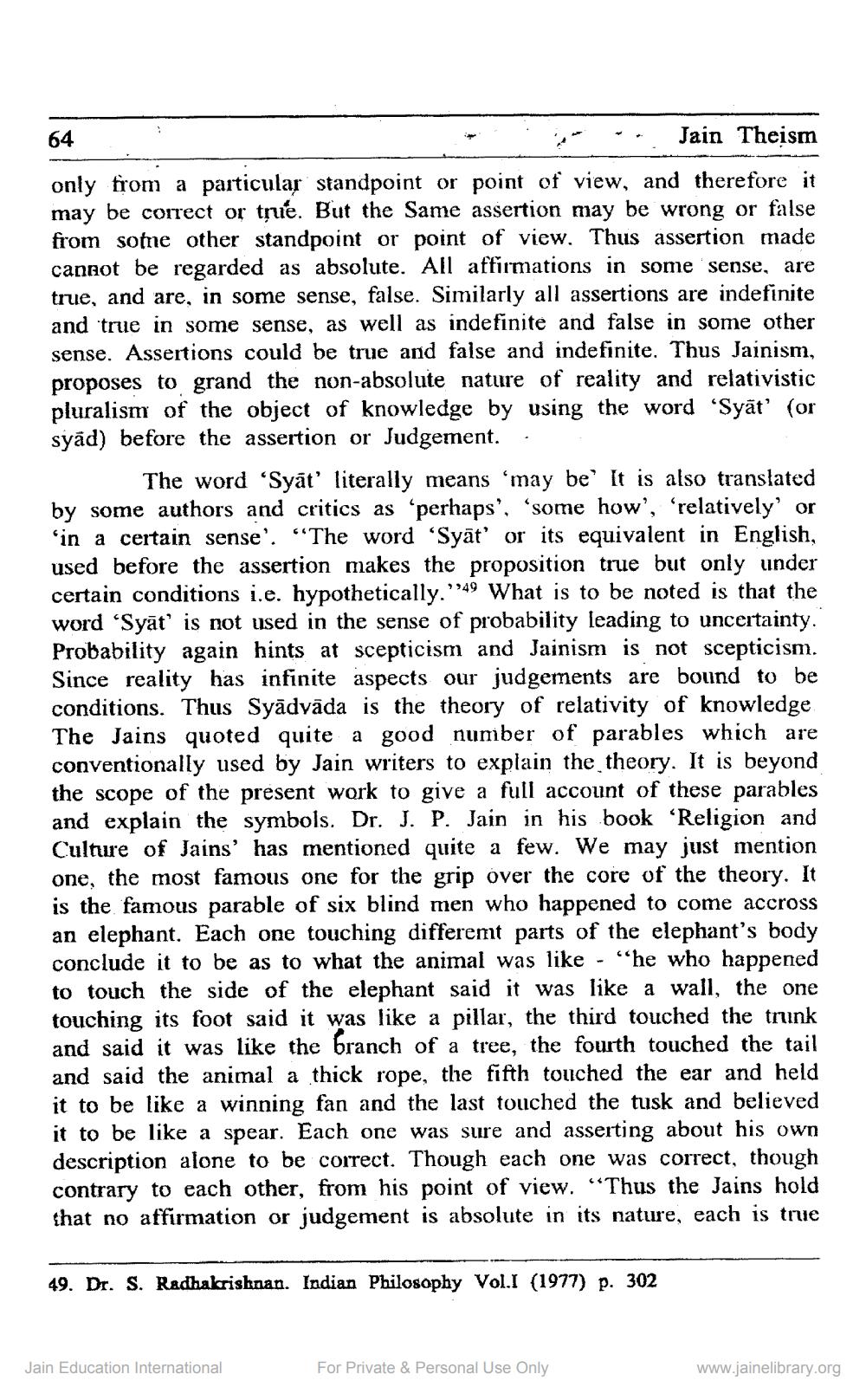________________
64
Jain Theism
only from a particular standpoint or point of view, and therefore it may be correct or true. But the Same assertion may be wrong or false from some other standpoint or point of view. Thus assertion made cannot be regarded as absolute. All affirmations in some sense, are true, and are, in some sense, false. Similarly all assertions are indefinite and true in some sense, as well as indefinite and false in some other sense. Assertions could be true and false and indefinite. Thus Jainism, proposes to grand the non-absolute nature of reality and relativistic pluralism of the object of knowledge by using the word 'Syat' (or syad) before the assertion or Judgement.
The word 'Syat' literally means 'may be' It is also translated by some authors and critics as 'perhaps', 'some how', 'relatively' or in a certain sense'. "The word 'Syat' or its equivalent in English, used before the assertion makes the proposition true but only under certain conditions i.e. hypothetically."49 What is to be noted is that the word 'Syat' is not used in the sense of probability leading to uncertainty. Probability again hints at scepticism and Jainism is not scepticism. Since reality has infinite aspects our judgements are bound to be conditions. Thus Syādvāda is the theory of relativity of knowledge The Jains quoted quite a good number of parables which are conventionally used by Jain writers to explain the theory. It is beyond the scope of the present work to give a full account of these parables and explain the symbols. Dr. J. P. Jain in his book 'Religion and Culture of Jains' has mentioned quite a few. We may just mention one, the most famous one for the grip over the core of the theory. It is the famous parable of six blind men who happened to come accross an elephant. Each one touching differemt parts of the elephant's body conclude it to be as to what the animal was like "he who happened to touch the side of the elephant said it was like a wall, the one touching its foot said it was like a pillar, the third touched the trunk and said it was like the branch of a tree, the fourth touched the tail and said the animal a thick rope, the fifth touched the ear and held it to be like a winning fan and the last touched the tusk and believed it to be like a spear. Each one was sure and asserting about his own description alone to be correct. Though each one was correct, though contrary to each other, from his point of view. "Thus the Jains hold that no affirmation or judgement is absolute in its nature, each is true
49. Dr. S. Radhakrishnan. Indian Philosophy Vol.I (1977) p. 302
Jain Education International
For Private & Personal Use Only
www.jainelibrary.org




